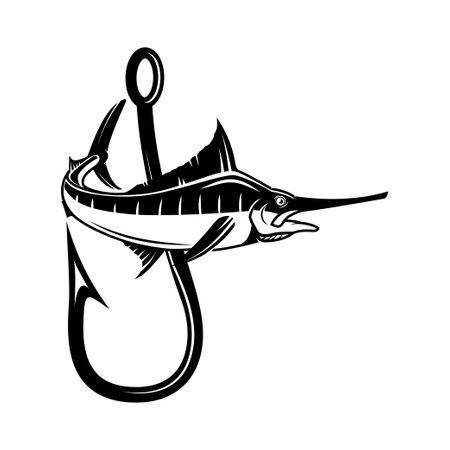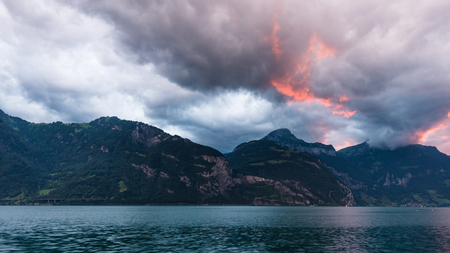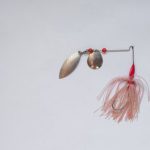1. Essential Trolling Gear and Setup
When it comes to lake trolling for popular game fish like trout, salmon, and walleye, having the right gear can make all the difference. Each species has different habits and preferred depths, so your setup needs to be tailored accordingly. Heres a breakdown of the essential equipment you’ll need and how to match it with your target fish.
Rods and Reels
For trolling, longer rods (typically 76″ to 10) are preferred because they help keep lines separated and absorb shock from hard-fighting fish. When selecting a reel, look for line-counter reels which allow you to precisely track how much line you have out — a key factor when targeting specific depths.
| Species | Rod Type | Reel Type | Line Weight |
|---|---|---|---|
| Trout | Medium-light trolling rod | Line-counter reel | 6-12 lb mono or fluorocarbon |
| Salmon | Medium-heavy trolling rod | High-capacity line-counter reel | 20-30 lb braid with leader |
| Walleye | Medium-action trolling rod | Baitcasting or line-counter reel | 10-14 lb mono or braid |
Downriggers and Planer Boards
Downriggers: These are essential tools for getting your lure down deep where fish often hold during warmer months. Downriggers use a heavy weight attached to a cable that drops your bait to precise depths. Theyre especially useful when targeting lake trout and salmon.
Planer Boards: Ideal for spreading out multiple lines and covering more water horizontally. Planer boards are great for walleye fishing in shallower areas or when fish are suspended near the surface.
When to Use Downriggers vs. Planer Boards:
| Tool | Best For | Depth Range |
|---|---|---|
| Downriggers | Lake Trout, Salmon | 30–100+ ft |
| Planer Boards | Walleye, Surface-feeding Trout | 0–30 ft |
Electronics: Fish Finders and GPS Units
A quality fish finder is one of the most valuable tools in your trolling arsenal. It helps you locate schools of fish, understand bottom structure, and track your bait depth. Many modern units also include GPS mapping, which allows you to mark productive spots and maintain consistent trolling routes.
Trolling Tips by Species:
- Trout: Troll with spoons or small crankbaits at varying depths; use lead core line if downriggers aren’t available.
- Salmon: Use flashers with hoochies or cut bait; troll deep with downriggers during summer months.
- Walleye: Harness rigs and crankbaits behind planer boards work well; focus on structure at mid-depths.
No matter what species youre after, matching your gear to the fish and water conditions is key. With the right setup — rods, reels, downriggers, planer boards, and electronics — youll increase your chances of success every time you hit the water.
Understanding Lake Structure and Fish Behavior
When it comes to trolling for trout, salmon, and walleye in lakes, understanding how these fish interact with their environment is key. Their location in the water column often depends on temperature, depth, structure, and seasonal changes. Let’s break down how each of these elements affects your target species.
Water Temperature Preferences
Each species has a preferred water temperature range. Knowing this helps you determine what depth they’re likely holding at during different times of the year.
| Species | Preferred Temperature Range (°F) |
|---|---|
| Trout | 50–60°F |
| Salmon | 48–58°F |
| Walleye | 55–68°F |
Depth and Thermocline
Lakes often develop a thermocline—a layer where water temperature changes rapidly with depth—during warmer months. Trout and salmon tend to hold just below or within the thermocline where oxygen levels are still good and temperatures are ideal. Walleye may hang out above or around the thermocline, depending on conditions.
Seasonal Depth Patterns
| Season | Trout & Salmon Location | Walleye Location |
|---|---|---|
| Spring | Shallower waters (10–30 ft) | Shallow flats and points (10–20 ft) |
| Summer | Deeper near or below thermocline (30–80 ft) | Mid-depths near structure (15–40 ft) |
| Fall | Moving shallower as temps cool (20–50 ft) | Nearing spawning areas (10–25 ft) |
The Role of Lake Structure
Lakemaps are your best friend when trolling. Fish relate closely to underwater features like drop-offs, humps, ledges, points, and submerged timber. These structures offer cover and ambush points for feeding.
Trolling Tip:
Use your sonar or fish finder to identify breaks in depth and baitfish activity along structures. These are prime trolling zones.
Baitfish and Forage Patterns
The presence of baitfish heavily influences where predatory fish like trout, salmon, and walleye will be. Watch for balls of bait on your electronics or surface activity that signals feeding action.
Key Forage Species by Region:
- Northern Lakes: Smelt, ciscoes, perch
- Midwest Lakes: Shad, minnows, young panfish
- Western Lakes: Kokanee fry, shiners, sculpins
The more you understand how these fish move through the lake based on temperature, depth, and structure throughout the seasons, the better you’ll be at choosing the right trolling speed, lure depth, and location to consistently put fish in the boat.

3. Effective Lure Selection and Presentation
When trolling for trout, salmon, or walleye on American lakes, choosing the right lure and presenting it effectively can make all the difference. Each species responds to different colors, actions, and speeds, so understanding their preferences is key to a productive day on the water.
How to Choose the Right Lures
Selecting lures depends on the target species, water clarity, time of year, and depth. Heres a quick guide:
| Species | Recommended Lures | Best Colors | Ideal Trolling Speed |
|---|---|---|---|
| Trout | Spoons, small crankbaits, spinners | Silver, gold, rainbow pattern | 1.5–2.5 mph |
| Salmon | Dodgers with hoochies, cut plugs, flashers with bait | Chartreuse, white, UV colors | 1.8–3.0 mph |
| Walleye | Crankbaits, worm harnesses, stickbaits | Firetiger, perch pattern, purple | 1.0–2.0 mph |
Lure Presentation Tips
The way you present your lure can be just as important as the lure itself. Here are some tips to get more bites:
- Vary Depths: Use downriggers or lead core line to reach specific depths where fish are suspended.
- Mimic Baitfish: Choose lures that imitate local forage in size and action.
- Add Attractors: Flashers or dodgers can enhance visibility and trigger aggressive strikes.
- Scent Matters: Apply scent or use baited rigs to increase your odds, especially for walleye and salmon.
Deploying Multiple Setups Effectively
Trolling multiple rods increases your coverage and helps pinpoint what’s working. Here’s how to do it without tangles:
Use Planer Boards
Planer boards spread lines out horizontally from the boat, letting you cover more water and run different lures at once.
Stagger Your Depths and Lures
Avoid redundancy by running different lures at varying depths. For example:
| Rod Position | Lure Type | Trolling Depth |
|---|---|---|
| Port Side (Planer Board) | Spoon (silver) | 10 ft |
| Stern (Downrigger) | Dodger & Hoochie (chartreuse) | 40 ft |
| Starboard Side (Planer Board) | Crankbait (firetiger) | 20 ft |
Troubleshooting Tip:
If youre not getting hits after 30 minutes, change one variable—speed, color, depth—or try a new presentation entirely.
Trolling success comes from paying attention to details. Mix up your setups until you find what triggers bites for trout, salmon, or walleye in your favorite lake.
4. Seasonal Trolling Strategies
When trolling for trout, salmon, and walleye in lakes across the U.S., understanding seasonal patterns is key to success. Fish behavior changes throughout the year based on water temperature, oxygen levels, and food availability. Heres how you can adjust your tactics for spring, summer, and fall to increase your catch rates.
Spring Trolling Tactics
As lakes begin to warm up after winter, fish move into shallower waters to feed. This is a great time to troll close to shore or near the surface. Look for areas where streams enter the lake — these spots bring in warmer water and attract baitfish.
Tips:
- Use smaller baits that mimic early-season forage like minnows and insects.
- Troll slowly — around 1.5 to 2 mph is ideal.
- Focus on depths between 5–20 feet.
Summer Trolling Tactics
In summer, rising temperatures push trout, salmon, and walleye into deeper, cooler water. A fish finder becomes essential here to locate thermoclines and suspended schools of fish.
Tips:
- Use downriggers or lead core lines to reach deeper zones (30–70 feet).
- Baitfish grow larger in summer, so upsize your lures accordingly.
- Troll faster — usually between 2.0 to 3.0 mph depending on species.
Fall Trolling Tactics
As temperatures cool down again in fall, fish become more aggressive as they bulk up for winter or prepare to spawn. They often return to mid-depths and can be found closer to shore during early mornings and evenings.
Tips:
- Switch back to medium-sized lures that resemble shad or juvenile perch.
- Troll at moderate speeds — around 2.0 mph.
- Target rocky points, drop-offs, and weed edges where fish stage before spawning.
Seasonal Overview Table
| Season | Depth Range | Trolling Speed | Bait/Lure Type | Hot Spots |
|---|---|---|---|---|
| Spring | 5–20 ft | 1.5–2.0 mph | Small spoons, crankbaits, live minnows | Shorelines, creek mouths, flats |
| Summer | 30–70 ft | 2.0–3.0 mph | Larger spoons, plugs, spinner rigs | Main lake basins, thermocline edges |
| Fall | 10–40 ft | 2.0 mph | Medium crankbaits, swimbaits, jigs | Drop-offs, rocky points, weed edges |
Tuning your trolling strategy with the seasons helps you stay one step ahead of the fish and improves your chances of landing that trophy trout, salmon, or walleye on your next lake trip.
5. Troubleshooting and Adapting on the Water
Even with the best trolling setup, lakes can be unpredictable. Weather shifts, water temperature changes, and boat traffic can all throw a wrench in your plan. Successful anglers know how to adapt quickly and make real-time decisions to keep fish biting. Here’s how to stay flexible and fine-tune your approach when things aren’t going as planned.
Adjusting to Changing Conditions
Lake conditions can change fast — wind picks up, clouds roll in, or the sun starts beating down hard. Each of these factors can affect fish behavior and depth. If you’re not getting bites where you were earlier, don’t hesitate to:
- Change trolling speed: Slow down in colder or cloudy conditions; speed up if fish seem more active.
- Alter lure color: Use brighter colors on overcast days or stained water; go natural in clear conditions.
- Vary depth: Fish might move deeper during midday or warmer temperatures.
Reading Your Sonar Like a Pro
A quality fish finder is one of your best tools for lake trolling. But it’s only helpful if you know what you’re looking at. Here are some quick sonar reading tips:
| What You See | What It Means | Your Move |
|---|---|---|
| Bait balls with arches nearby | Predators are actively feeding | Troll lures just below or through the bait ball |
| Fish holding tight to bottom | Inactive or pressured fish | Use bottom bouncers or bounce spoons close to structure |
| Suspended fish mid-column | Open-water feeders like salmon or trout | Dipsy divers or lead core line to match their depth |
Navigating Boat Traffic and Pressure
On busy lakes, especially during weekends or tournaments, boat pressure can push fish deeper or into less obvious areas. To stay productive:
- Avoid popular trolling lanes: Try off-the-beaten-path routes where fish feel less pressured.
- Troll tighter turns and zig-zag patterns: Helps cover different depths and angles.
- Watch your sonar for fish movement away from traffic zones: They often relocate instead of shutting down completely.
When Fish Get Finicky
If youre marking fish but theyre not biting, its time to experiment. Here are some tweaks that often trigger strikes when nothing else works:
Lure Presentation Tips
- Add scent: Salmon eggs, garlic oil, or anise can turn lookers into biters.
- Switch lure action: Go from a wobbling spoon to a fluttering one, or swap crankbait styles.
- Shorten leader length: This gives the lure a more erratic action that can entice wary fish.
Trolling Speed Adjustments Guide
| Target Species | Standard Trolling Speed (mph) | If Bites Slow Down… |
|---|---|---|
| Trout (Rainbow/Brown) | 1.5–2.0 | Slow to 1.2 or add stop-and-go motion |
| Salmon (Kokanee/Chinook) | 1.2–2.5 | Bump up speed slightly or change dodger size |
| Walleye | 1.0–1.8 | Add crawler harnesses; slow roll at 0.8 mph |
The key is to stay alert and never get too locked into one method. The most successful lake trollers are the ones who keep tweaking until they dial in what the fish want at that moment.


